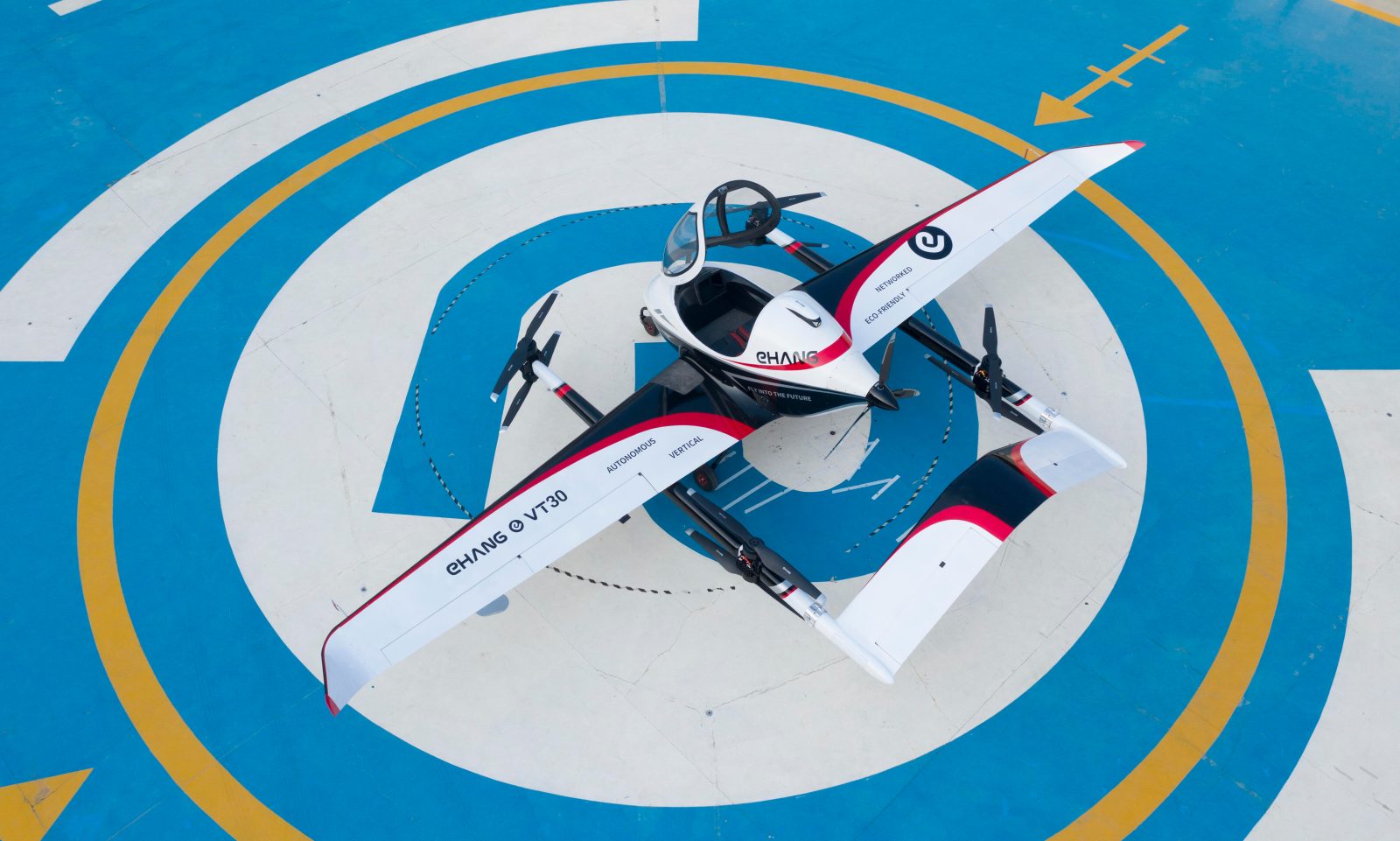
Leading autonomous air vehicle (AAV) maker EHang stepped up its business development in Japan with a pair of notable deals, including securing the first order for its VT-30 long-range craft and deepening its work preparing the nation for looming urban air mobility (UAM) operations.
EHang said it had concluded the accords just before Christmas, which served to expand the Chinese company’s role as a central player in Japan’s budding UAM sector. EHang has successfully flown demonstration flights of its EH216 AAV craft in Japan as a preview of the kind of air taxi services Japanese officials want to debut in 2023. Indeed, one consequence of the latest agreements was EHang expanding its role in examining and preparing both those operations, and other kinds of AAV uses.
That latter activity is tied to EHang obtaining its first-ever order for the VT-30, whose 300 km range opens up an entirely different kind of UAM activity than the short-hopping EH216, which has a top distance of 35 km.
Unlike the wingless EH216 electric takeoff and landing vehicle, the VT-30 has an emission-free hybrid engine system to allow longer flights, and an aerodynamically enhanced fixed wing configuration with which it can either lift off vertically or do so in taxing mode.
The VT-30 AAV is designed to service longer runs between cities or urban clusters carrying a pair of passengers. The two-person EH216 will be used for inner-city air taxi operations, but doubtless command the biggest production focus – at least until other forms of UAM travel develop.
EHang and its Austrian FACC partner in manufacturing the EH216 plan to produce 3,000 of the craft for air taxi service by 2025. The vehicle is already being used in preparations for extensive AAV testing in special flight corridors in China.
The new deals with Japan call for EHang to work with local partners like the Okayama Kurashiki Mizushima Aero & Space Industry Cluster Study Group (MASC) to study operational scenarios using EH216 and VT-30 AAVs. As part of that, EHang will help flesh out UAM operations in Japan ranging from air taxis to longer-range passenger and cargo transport, but also other kinds of diverse public services to farther-flung destinations that aren’t benefitting from air travel as much as central, densely populated areas.
“AAVs have always been expected to be used in the scenarios of travel on outlying islands and sparsely populated areas, life rescue, and material support in disasters,” said Narisawa Koichi, civil aviation bureau counsellor for Japan’s Ministry of Land, Infrastructure, Transport and Tourism (MLIT). “Recently, with the cooperation and support of the MASC, EHang’s dual-seat AAV EH216 has completed demonstration flights successively in Fukushima and Okayama, Japan after its flight debut in June this year. This further explored the application and practice of AAV solutions in use cases such as cross-island travel, emergency rescue and aerial logistics.”
As part of the understanding, the MLIT will again prepare and publish new test guidelines to support demonstration UAM flights by AAV companies like EHang, as it did earlier this year to facilitate the successful EH216 trial sorties.
FTC: We use income earning auto affiliate links. More.




Comments